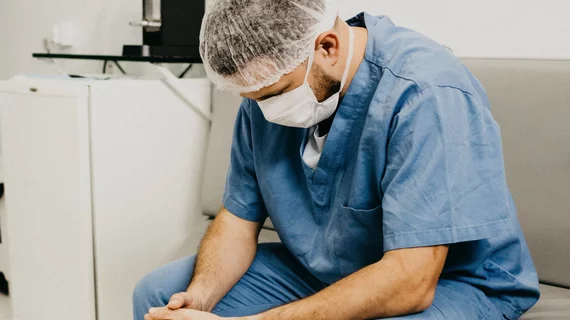Cardiologists have worked tirelessly to treat COVID-19—but their job has only just begun
Nearly eight months after a cluster of unusual pneumonia cases were reported in China, the COVID-19 pandemic continues to disrupt nearly ever facet of our healthcare system.
It’s been a long, hard battle for cardiovascular care providers, one full of change and uncertainty. But the situation is far from over, according to a new commentary in JACC: Heart Failure.
“Our fatigue for the care of the acute COVID-19 patients is understandable,” wrote Christopher M. O'Connor, MD, CEO of the Inova Heart & Vascular Institute in Fairfax, Virginia. “Our contributions have been remarkable, but we must be prepared for the long-term. COVID-19 survivors will continue to have important symptoms and impairment of functional status that will require us to be diligent in our understanding and care.”
O'Connor, who also serves the editor-in-chief of JACC: Heart Failure, used the opinion piece to detail his own experience treating patients during this unusual time. He wrote about how both patient care and the role of heart failure physicians have changed in the wake of COVID-19.
A new governance structure had to be implemented, for example, and updated algorithms were needed to expedite patient care. Heart failure specialists even became primary care physicians, and numerous cardiovascular units were redesigned to treat COVID-19 patients.
“Our days have been consumed with COVID-19 management, while ensuring our cardiovascular patients receive safe and effective care,” he wrote.
A proposal for the future
Even as physicians start to adjust to this “new normal,” O’Connor noted, “the chronic phase of COVID-19 will continue for years to come.”
To help tackle this challenge head-on, O’Connor has proposed the establishment of cardiopulmonary COVID-19 clinics.
“This would be a multidisciplinary clinic with pulmonologists, cardiologists, and the multidisciplinary team evaluating recovered COVID-19 patients who continue to have symptoms,” he explained. “In this capacity, they could be evaluated and their information could be categorized in a database beyond signs and symptoms. Moreover, a comprehensive biomarker analysis could be performed along multiple pathways including inflammatory, hemodynamic, myocardial injury, and other biomarkers to better understand and follow this condition. From the standpoint of imaging, comprehensive transthoracic echocardiography with a particular emphasis on measurement of diastolic dysfunction and RV function could be made.”
In addition, O’Connor added, these clinics could also perform “cardiopulmonary exercise studies” to help physicians track COVID-19 patients well after their initial recovery. They may be “excellent candidates” for exercise intervention.
Click here for the full commentary.

